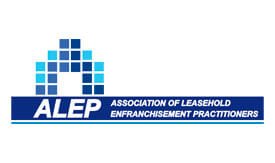The basis of a dilapidation is simple: the landlord is compensated for a breach by the tenant of their obligations set out in the lease. The most common of these obligations are clauses that state the tenant as being the party responsible for repairing, redecorating, reinstating, maintaining, cleaning and carrying out works to comply with statutory covenants.
A well drafted lease should set out the tenant’s obligations in a clear fashion. This is important because the parties should understand their respective obligations as it is not always the case that a tenant needs to return the property to the landlord in the same condition as it was at the beginning of the lease. Though, often than not there will be stipulations to the effect that the property must be returned in the same condition as it was at the beginning of the lease. This is unsurprising; a landlord wants his property in a good state of repair so that he is able to re-let the property without an intervening rent-free period which is used to put the property back into an acceptable condition.
That being said, what can a landlord do if a tenant refused to pay for dilapidations? Ultimately, the landlord can take action. This may be done during the term of the lease and at the expiry of the lease.
The landlord should appoint a dilapidations surveyor to prepare a detailed schedule of dilapidations. This should then be served on the tenant by either the landlord or the landlord’s solicitor. At this point it is usual for the tenant to appoint their own surveyor to validate the claim. Subsequently to this the tenant should decide whether they wish to undertake the works or agree to a financial settlement with the landlord. Though on the expiry of a lease a tenant will lose any right to the former and negotiating a claim for damages becomes the only solution.
Landlords’ are advised that they should not attempt profit from this type of claim. Any agreement of a financial settlement must only reflect the actual cost incurred as a result of the tenant’s failure to comply with their lease, and so it cannot include any exemplary (punitive) damages. This is regulated by Section 18(1) of the Landlord and Tenant Act 1927, which caps the level of damages to a limit which cannot exceed the amount to which the value of the property is diminished by as a result of the tenant’s breach. It, too, limits a claim if there is a plan to redevelop or make alterations to the premises after the lease expires.
If a tenant refused to carry out their obligations or refuses to pay for dilapidations a landlord may take action in respect of this during the lease term. The options available to the landlords are:
- Forfeiture;
- Claim damages;
- Entry and repair under a ‘Jarvis v Harris’ clause; or
- Specific performance.
A landlord can decide to forfeit the lease in the usual way, by serving a section 146 notice, if the lease contains a forfeiture clause exercisable on the failure of the tenant to comply with their obligations under the lease in respect to the condition of the property. If the landlord serves notice based on a breach of an obligation when the lease is termed to last 7 years or more, with 3 or more remaining, the Leasehold Property (Repairs) Act 1938 will apply. Though, there are various criteria the landlord must fulfil to obtain permission the core of them is a demonstration to the court that there has been a significant decrease in the value of the property. A tenant may, in the case of forfeiture, serve a counter-notice within 28 days to prevent the landlord from taking any legal proceedings without the court’s permission.
Alternatively, the landlord may attempt to claim damages for the disrepair. Though Leasehold Property (Repairs Act) 1938 does allow a tenant to serve a counter-notice which may prevent the landlord from taking any further action with the court’s permission. Damages are calculated by various factors but the most important one is that damages are limited to the diminution in value of the property.
One of the most modern clauses in a lease is the ‘Jarvis v Harris’ clause. This gives a landlord the right to enforce covenants during the lease term by serving a Repairs Notice to the tenant, and then if the tenant fails to comply the landlord may then re-enter the property, carry out the works and reclaim costs from the tenant as a debt.
A landlord may also request a court order of specific performance which compels the tenant to carry out works and to comply with the relevant lease obligations. Though, a court will be reluctant to make such an order if the landlord cannot demonstrate why other options are inappropriate.
Parties should first try less expensive methods of Alternate Dispute Resolution (ADR) before any court proceeding is considered. Though, if disputes result in a court hearing and the landlord is successful in their claim and is awarded a sum for dilapidations, they will ask the Court to make an Order that the tenant pays their legal costs. Similarly, if the Court finds that there is no dilapidations liability or some liability but at a level below any offer made by a tenant, then the tenant will seek their costs from the landlord.
Lastly, in a dilapidations claim evidence is key. This could be photographic or technical expert evidence. If a tenant refuses to comply with their obligations it is recommended that the landlord collate as much evidence as possible in respect to their claim as to convince the court of the liability of the tenant.






